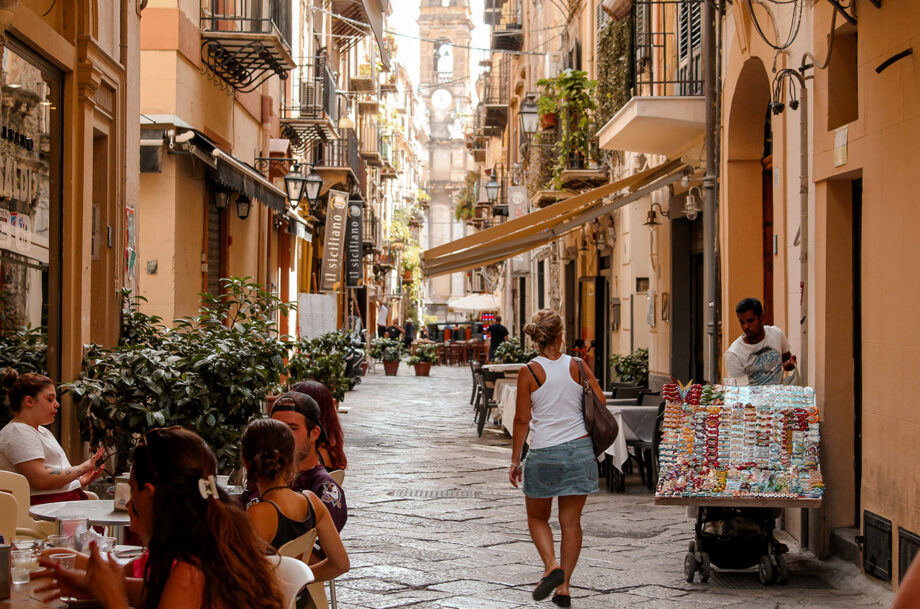The largest island in the Mediterranean Sea, Sicily is blessed with one of the most diversified culinary traditions in the world, drawing its roots not only in the rich biodiversity of its fertile land but also in the myriad different cultural influences linked to Ancient Greek, Roman, Arab-Norman and Spanish rule over the centuries.
Sicily is where pasta as we know it was born, according to most historians: the Arab rulers in the Middle Ages started drying thin strips made with flour, water and salt that would then evolve into spaghetti. It also boasts one of Italy’s most important fishing traditions, as testified by the many tonnare (former tuna processing facilities, sometimes transformed into museums or event locations) scattered across its 1,637km-long coastline.
Still to this day, the city of Mazara del Vallo on the island’s west coast houses Italy’s largest fishing fleet, supplying the entire country with fresh seafood. Agricultural products abound too: from capers grown on the volcanic soils of the islands of Salina and Pantelleria, to pistachios from the town of Bronte on Etna – Sicilian cooks have a plethora of ingredients to choose from.
This incredible diversity extends to wine production, with the region’s wine-growing areas offering almost any style you could think of.
Explore the excellence of one of Italy’s most iconic wine producers – book your place at the Antinori Masterclass at Decanter Fine Wine Encounter London 2025
Start on the streets
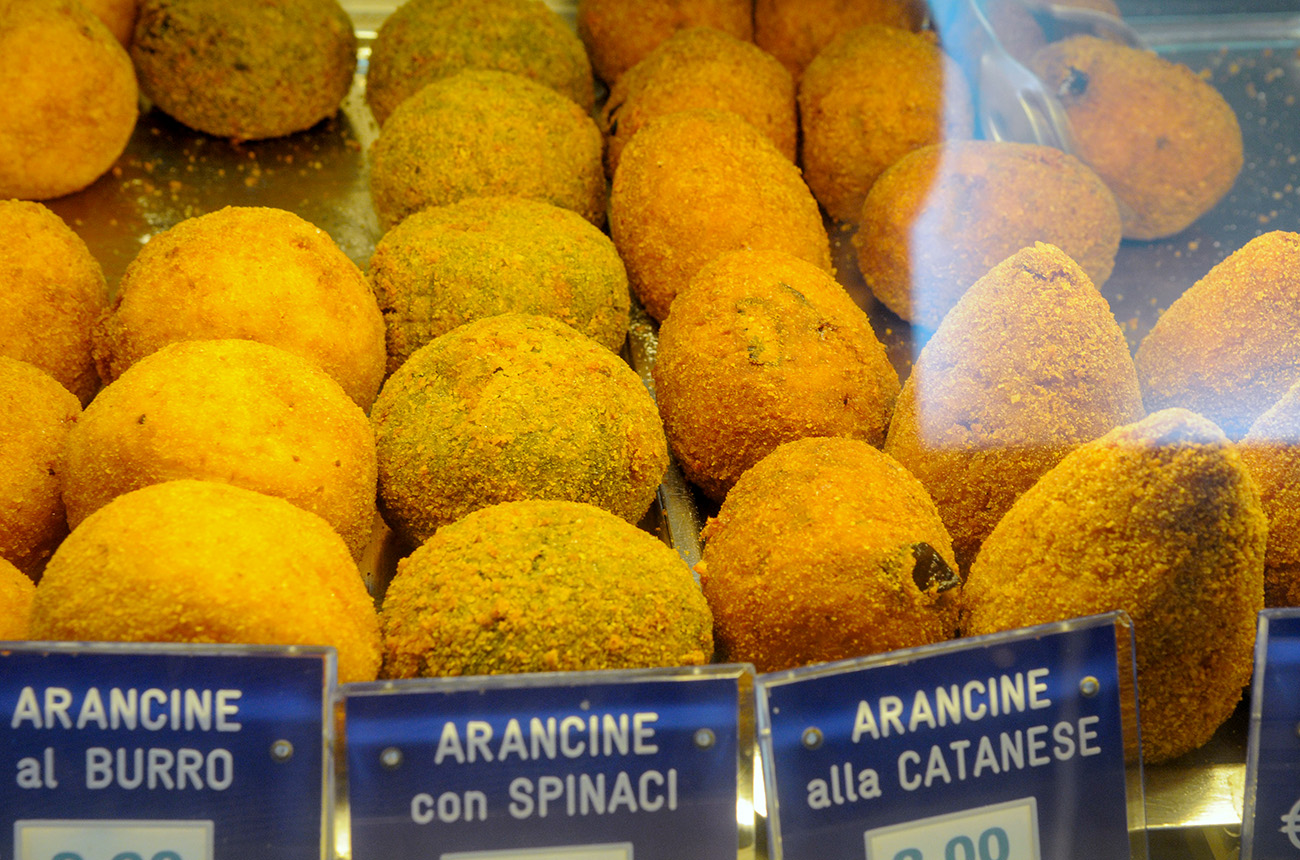
Arancini. Credit: Massimo Piacentino / Alamy Stock Photo
The Sicilian culinary feast begins on the streets. When in Palermo, grabbing a pane e panelle (bread with fried chickpea croquettes) or some pani câ meusa (bread with veal spleen) from market stands is highly recommended.
Arancini (fried rice balls filled with different ingredients) are popular in cafeterias all over the island, while regional variants of pizza like sfincione palermitano (thick, and topped with anchovies and caciocavallo cheese) and scaccia ragusana (stuffed with various ingredients, including vegetables and meat) belong to specific towns.
All these recipes are flavourful and fat-rich: while beer is the most obvious pairing, they also work well with a glass of palate-cleansing, layered, creamy sparkling wine – ideally, of course, from high-altitude vineyards in Sicily.
From the Mediterranean Sea
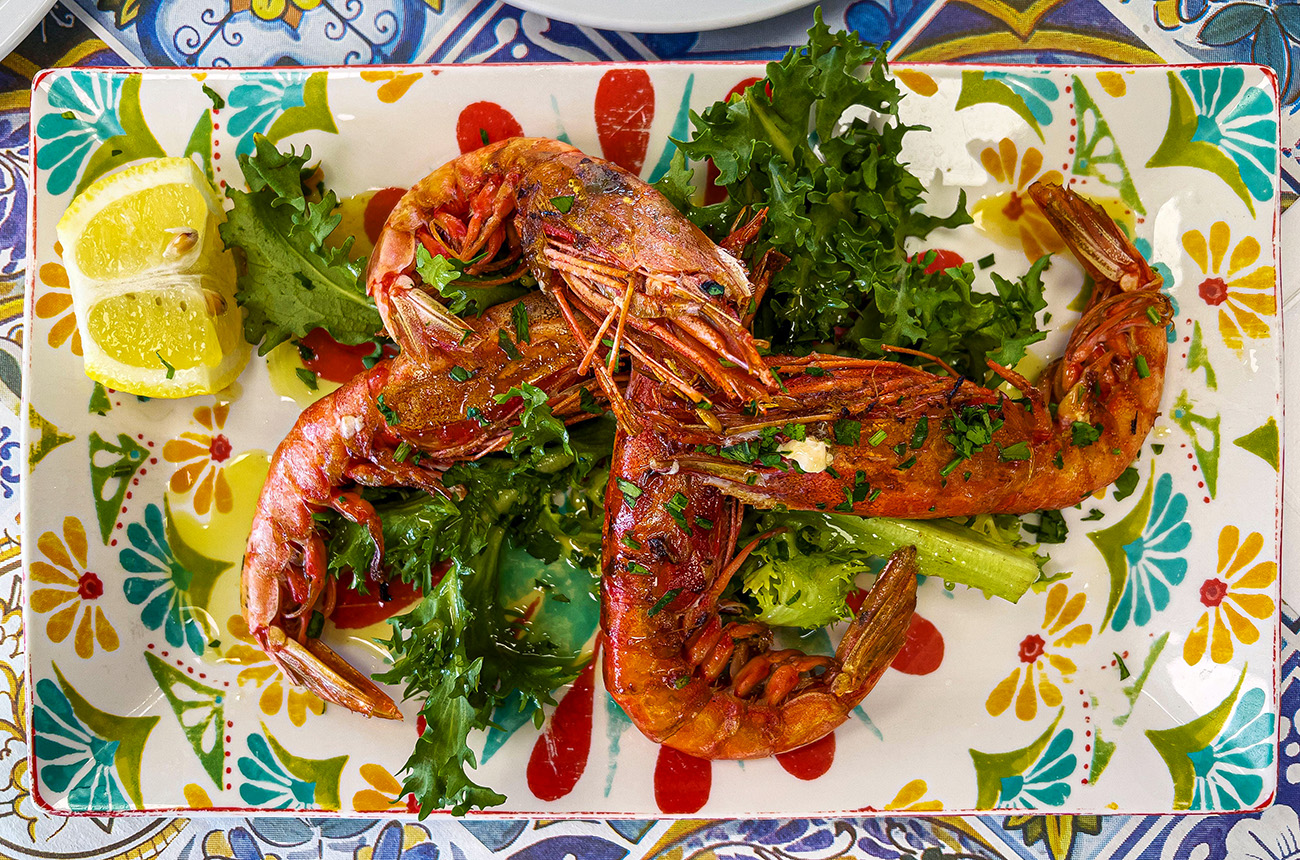
Mazara del Vallo red prawn. Credit: Salvatore Leanza / Alamy Stock Photo
Even though the seafood offering of most Sicilian restaurants is based upon the catch of the day, the iconic Mazara del Vallo red prawns are almost ubiquitous in higher-end establishments, and enjoy great success outside the region too. They are usually served raw or slightly marinated in citrus, and the lifted aromatics of a dry Zibibbo enhance their flavours.
Red tuna and swordfish require a slightly fuller wine to accompany their richer flesh: the latter makes an especially good pairing with a medium-bodied, unoaked Nero d’Avola with light tannins and loads of succulent fruit, especially when cooked in the Aeolian style (with capers, cherry tomatoes and olives).
In Western Sicily, the Arab influence is evident in popular dishes such as couscous alla trapanese (with shellfish, various fishes, almonds, garlic, saffron and sometimes herbs), which requires a softer and bolder white wine; try a slightly oaked Grillo to tame the tangy flavours.
The flintiness, spiciness and refreshing acidity of Catarratto, instead, complement creamier and oilier seafood pasta like busiate (twisted Trapani dry pasta) with pistachios and shrimps, or spaghetti with sardines, wild fennel and fried breadcrumbs.
A bounty of aubergines
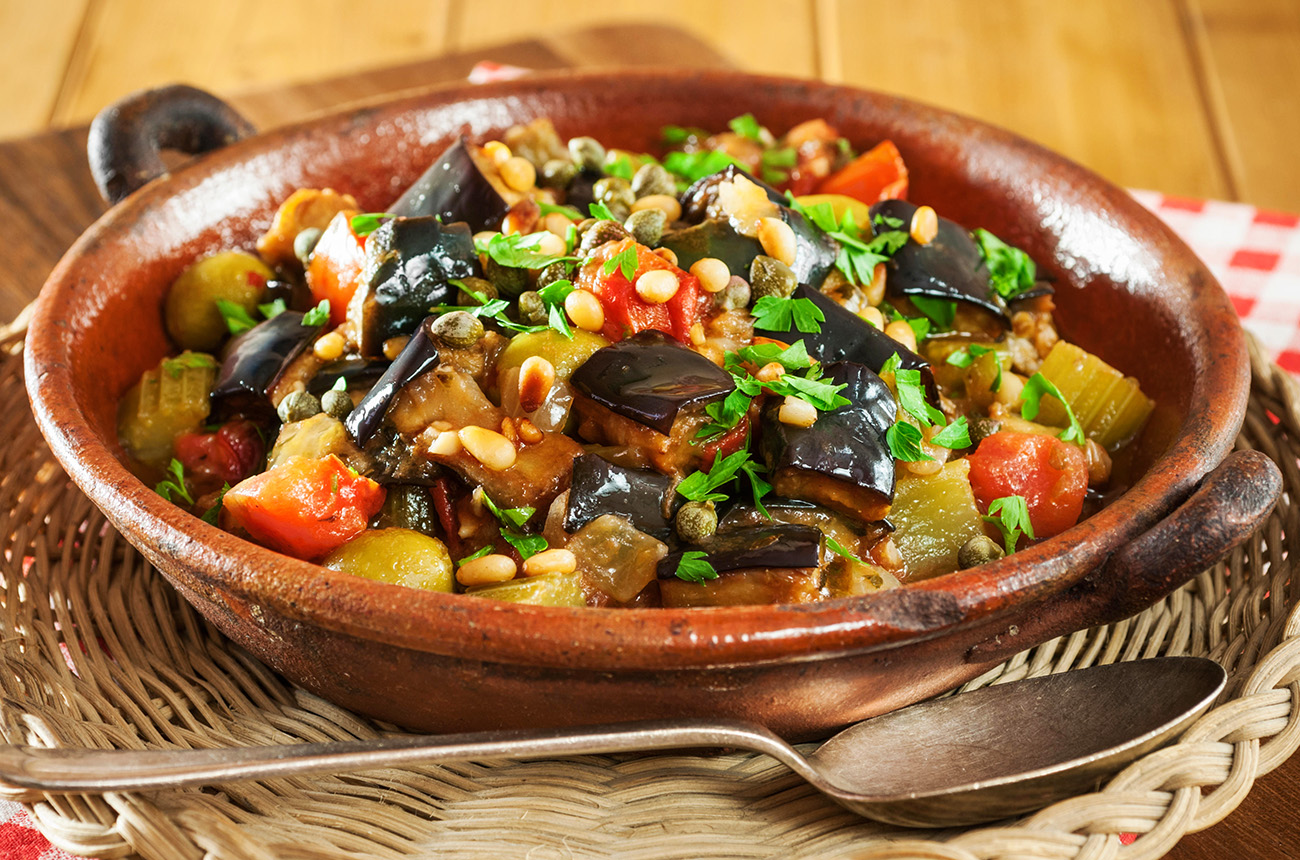
Caponata is one of Sicily’s most iconic dishes. Credit: Simon Reddy / Alamy Stock Photo
Different southern Italian regions claim the invention of parmigiana di melanzane (aubergine parmigiana), yet Sicily is where you’ll find some of the most flavourful versions thanks to the island’s hard-to-beat local aubergines.
Tomato sauce and aubergines also appear in caponata (assorted fried vegetables with celery, onions and a sweet and sour sauce) and pasta alla norma, the region’s most iconic pasta dish, featuring a generous shaving of salted ricotta cheese on top.
All of these recipes are well complemented by a fruit-forward, mid-weight red with crisp acids and gentle tannins, such as Frappato.
Meat-based dishes
The eastern portion of the island offers the greatest variety of options for carnivores: Nero dei Nebrodi ham from the namesake free-range pork breed, raised in a mountainous area close to Etna, shares a melt-in-your mouth consistency with Jamón Ibérico de Bellota, but with a slightly less oxidative flavour. It may be the best pairing with a lively and elegant Etna Rosso.
A richer and more tannic red like Perricone from western Sicily matches involtini alla messinese (fried veal rolls with Provolone cheese, parsley and garlic), horse meat chops (typical of Catania) or a Nero dei Nebrodi pork fillet.
Last but not least
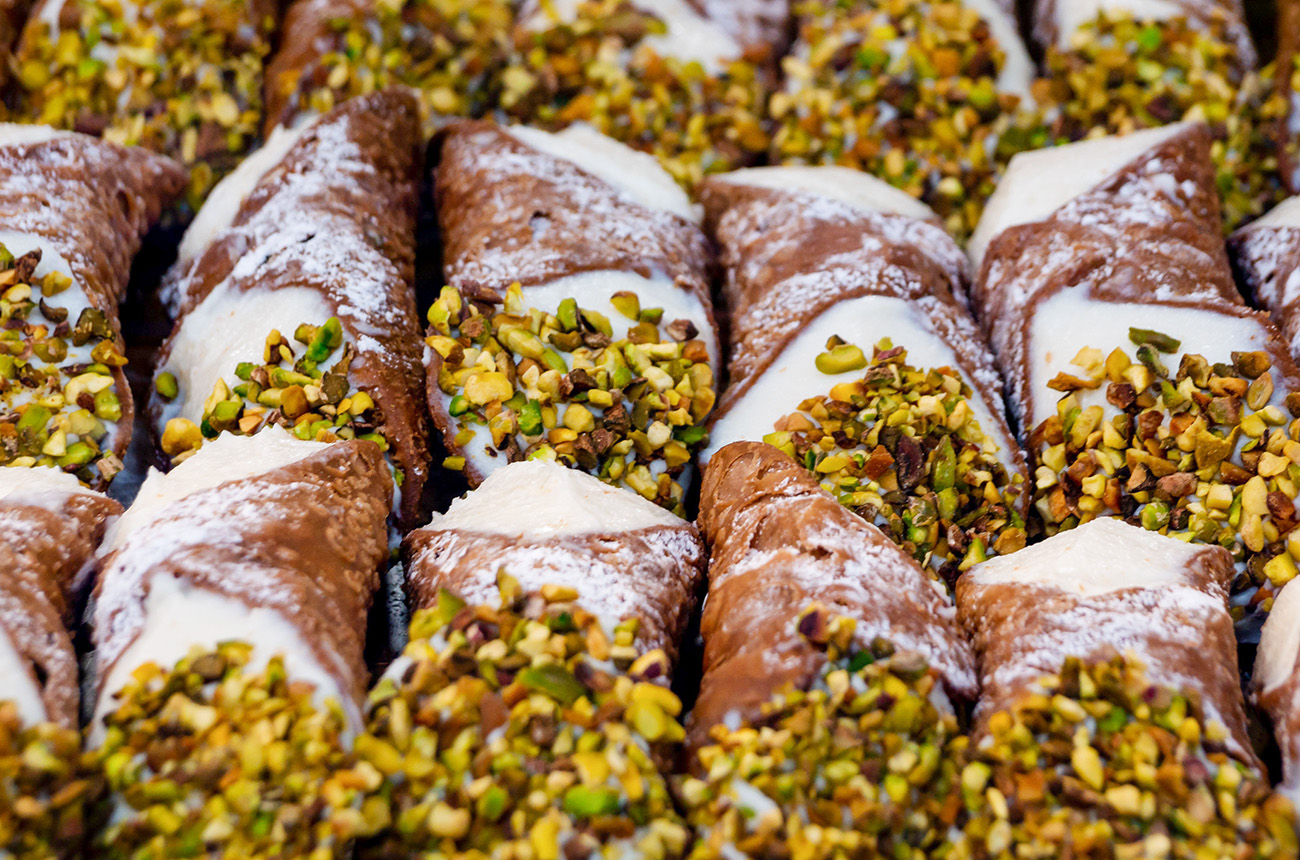
Cannoli with chopped pistachio. Credit: Marco Di Benedetto / Alamy Stock Photo
Any culinary experience in Sicily would be incomplete without a taste of the iconic regional desserts accompanied by one of the renowned Passito wines, mostly made with grapes dried under the Mediterranean sun.
For those preferring lighter styles with moderate residual sugar, Malvasia delle Lipari Passito, produced in the Lipari archipelago, is the best choice, making an ideal match to cassatelle (fried ravioli filled with sheep ricotta) and the traditional cannoli (tube-shaped fried pastry filled with ricotta cheese and candied fruit), especially if coming from the outskirts of Palermo, where the emphasis is usually on the creaminess and light acidity of the ricotta instead of just sweetness.
Most other Sicilian desserts, including almond paste sweets and cassata (sponge cake), work best with Passito di Pantelleria, a decadently sweet dessert wine from the namesake island in the Sicilian channel. Although a glass may sometimes feel like a dessert on its own, the best versions are savoury and bright enough to cleanse the palate and round up a delightful meal without causing fatigue.


